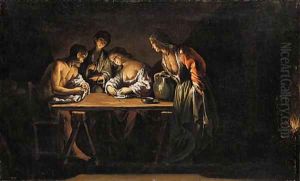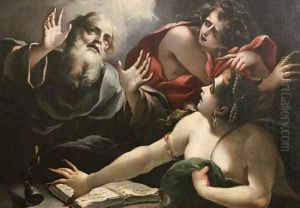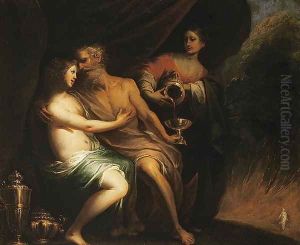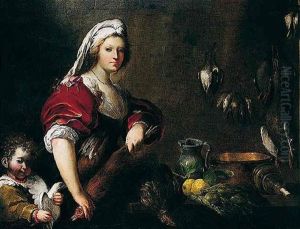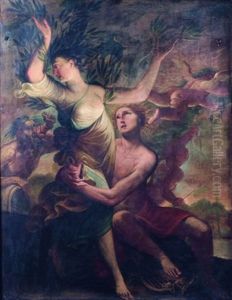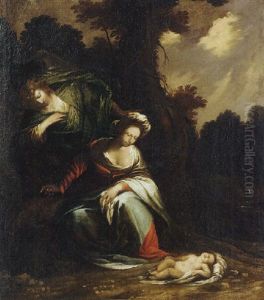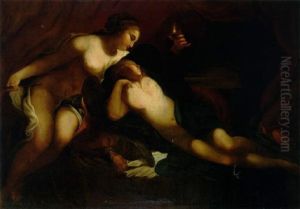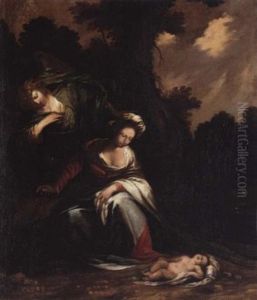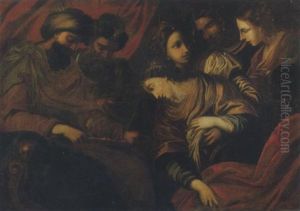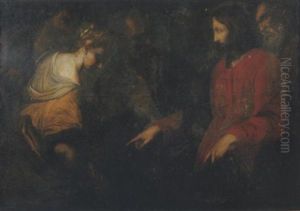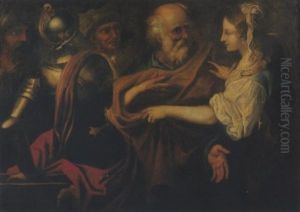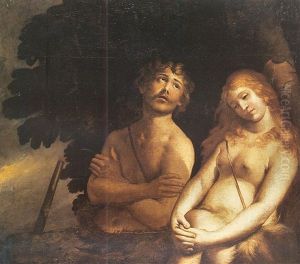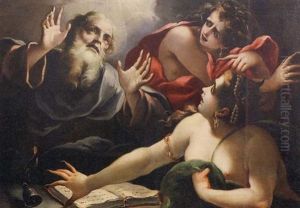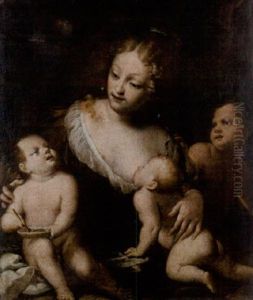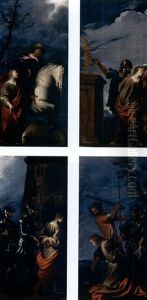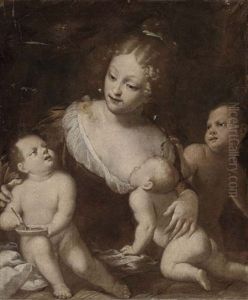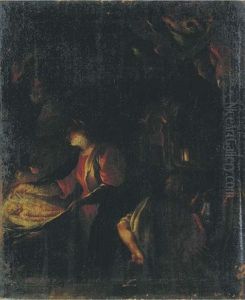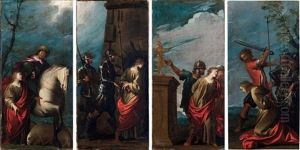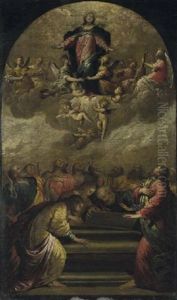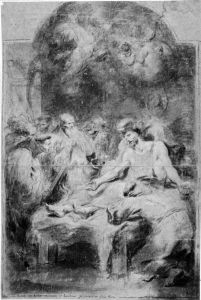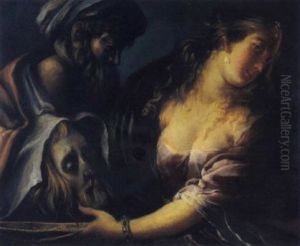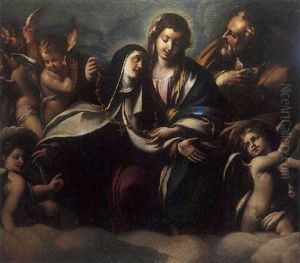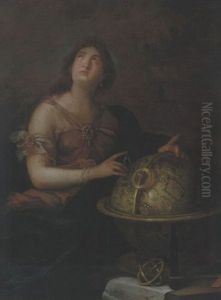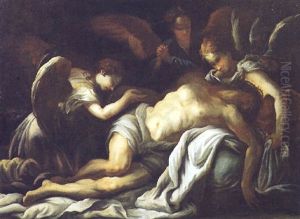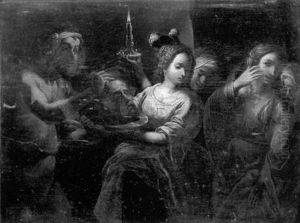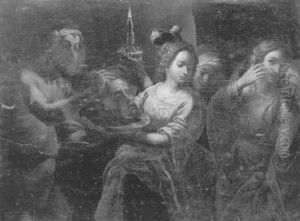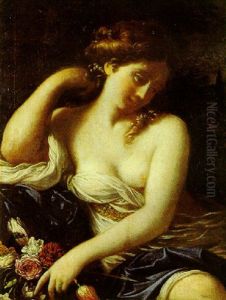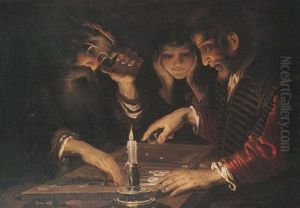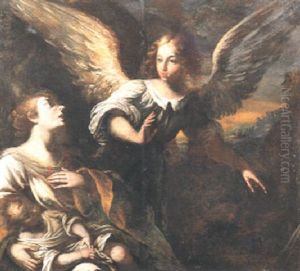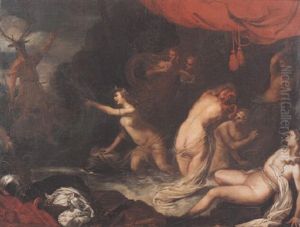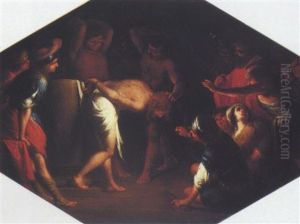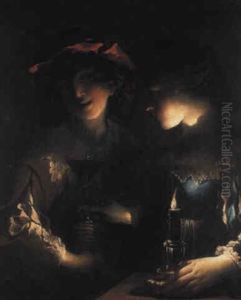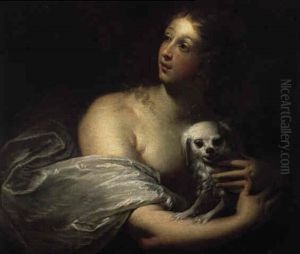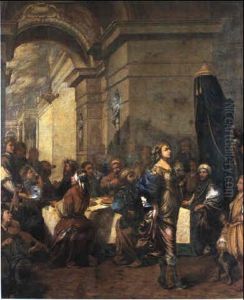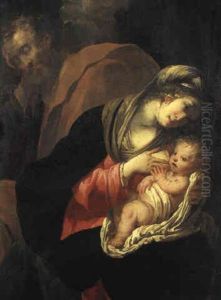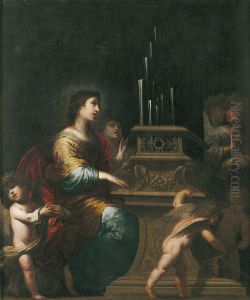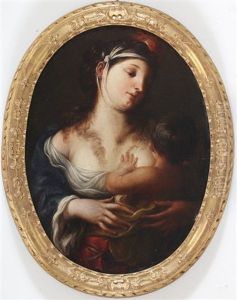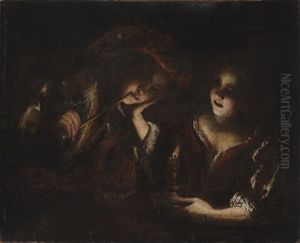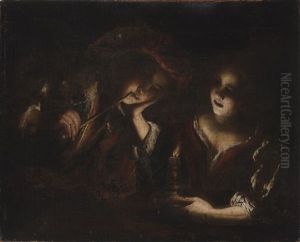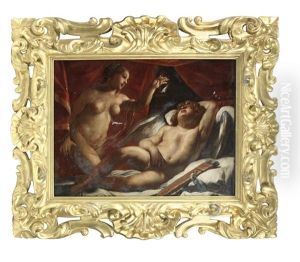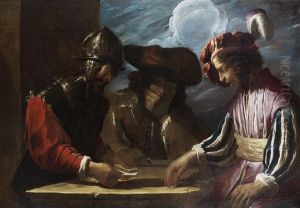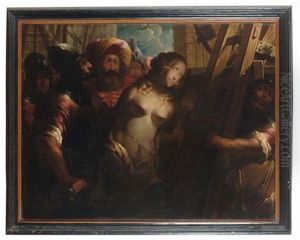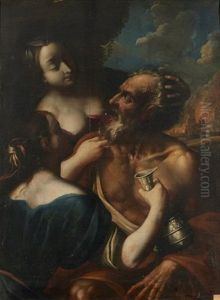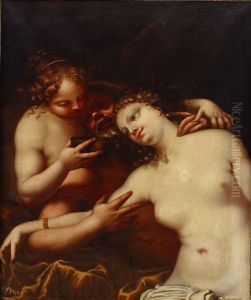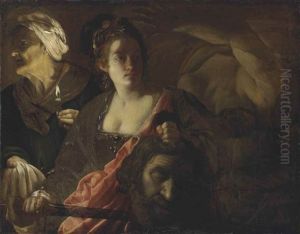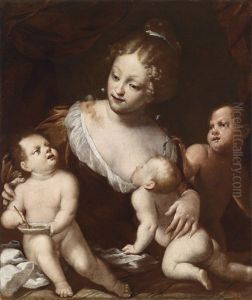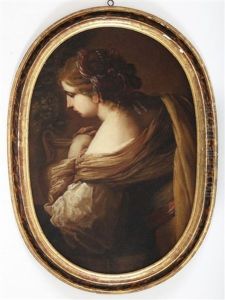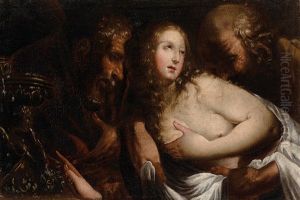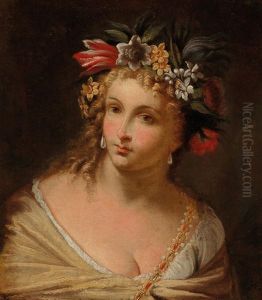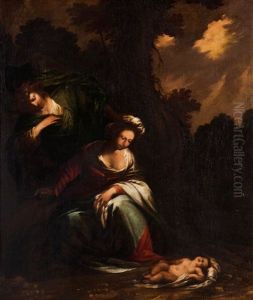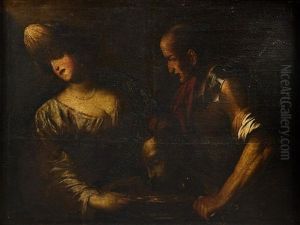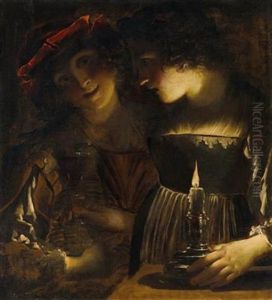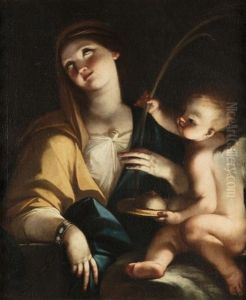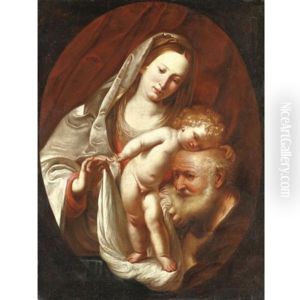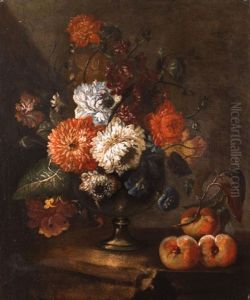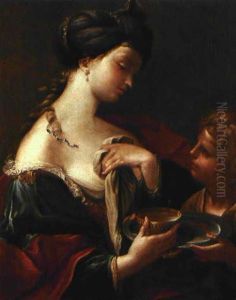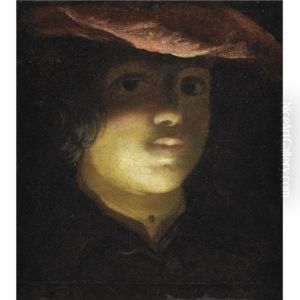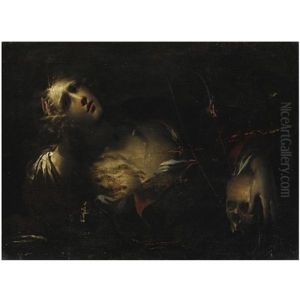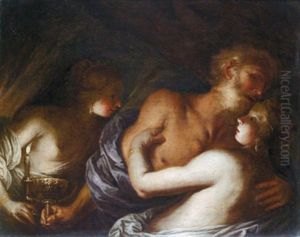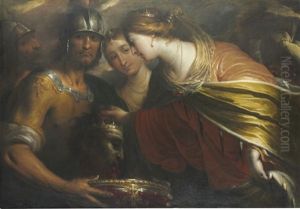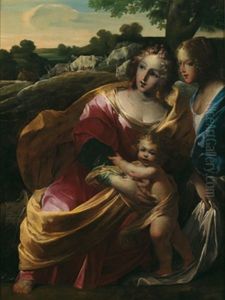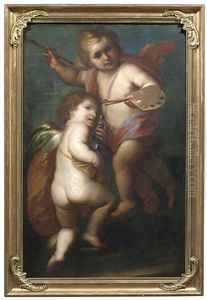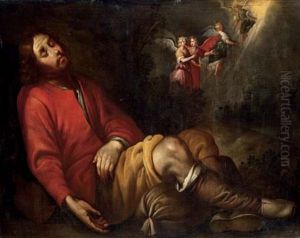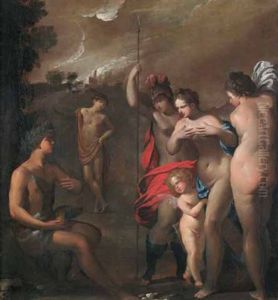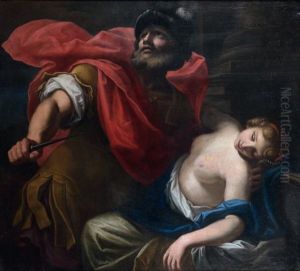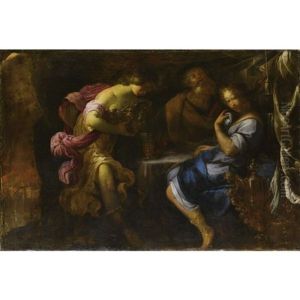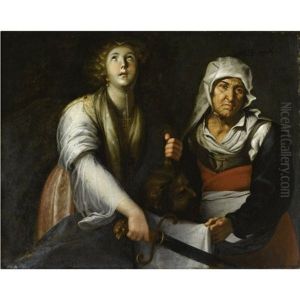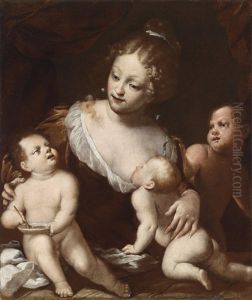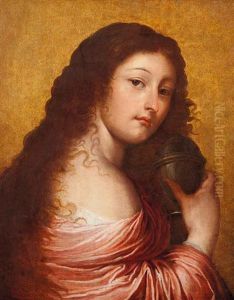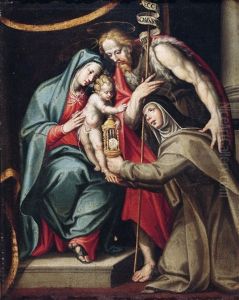Pietro Ricchi Paintings
Pietro Ricchi, also known as Pietro il Lucchese due to his birthplace Lucca, Italy, was a notable Italian painter of the Baroque period. Born in 1606 into an era where art was undergoing significant transformation, Ricchi became an important figure in the propagation of Baroque artistic expressions across Italy and beyond. His early life and artistic training are somewhat obscured by history, but it is known that he traveled extensively, which played a crucial role in the development of his style and technique.
Ricchi's journey into the artistic realm began with his initial training in Lucca, after which he ventured to Rome. Rome, during the early 17th century, was a vibrant center for artists, offering exposure to the pioneering works of Caravaggio and the Carracci brothers, which deeply influenced his artistic direction. Ricchi's style is characterized by dynamic compositions, dramatic use of light and shadow, and a vivid portrayal of emotion, elements that are quintessential to Baroque art.
After spending time in Rome, Ricchi's quest for artistic growth led him to Venice, and subsequently, to Lombardy and France, before he eventually settled in the Venetian Republic. Each region contributed to the evolution of his style by exposing him to different influences and artistic challenges. In Venice, for example, the colorism of Venetian masters like Titian and Veronese left a mark on his palette, enriching his work with vibrant colors and a softer, more atmospheric quality.
Throughout his career, Ricchi was prolific, producing a vast array of works ranging from religious commissions to mythological scenes. His paintings are notable for their emotional depth and the skillful depiction of fabrics and textures, which bring his figures to life. Despite his mobility, Ricchi maintained a consistent quality of work, earning commissions from churches, nobility, and private patrons across Europe.
Pietro Ricchi's death in 1675 marked the end of a fruitful career, but his legacy lived on through his contributions to the Baroque movement. His works continue to be appreciated for their emotional intensity and technical mastery, and they can be found in museums and collections worldwide, serving as a testament to his skill and creativity as an artist.
